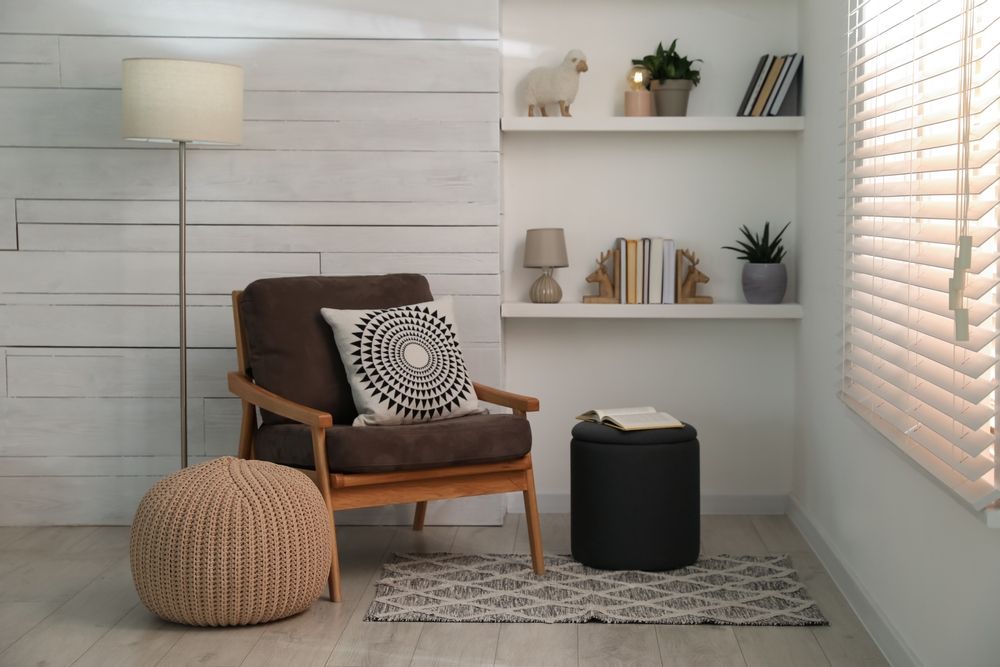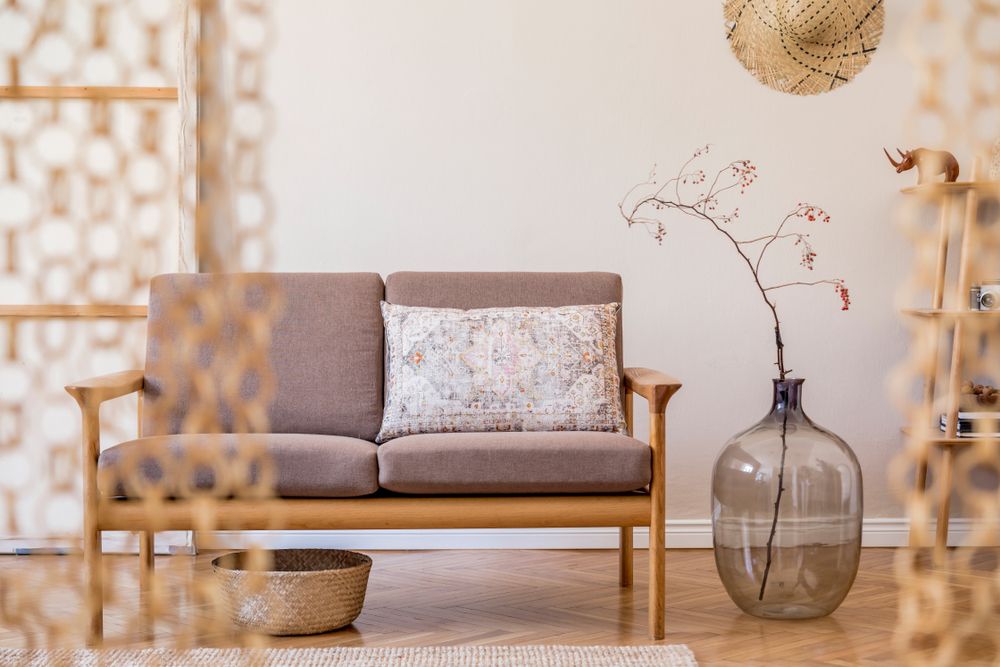Japandi Interior Design: A Minimalist Style You'll Love
Meet Japandi, the hottest new trend in interior design. Here is what you need to know to incorporate it into your home.

In recent years, the Japandi interior design style—a delicate fusion of Japanese and Nordic design elements—has been gaining popularity in the interior design world. This trend combines elements from Japanese and Scandinavian design to create a unique, minimalist aesthetic that appeals to a wide range of tastes.
In this post, we discuss the history of Japandi design, explore the key concepts of Japandi interior design, and offer some tips on incorporating this style into your home.
What is Japandi interior design?
Japandi interior design combines Japanese and Scandinavian styles to create a serene and beautiful aesthetic. This new aesthetic brings together the best of both worlds. You get the cozy warmth of Scandinavian homes with the clean beauty of design used in Japan.


The Japandi style emphasizes simplicity in living. It utilizes natural materials and clean lines to create spaces that evoke a sense of peace. Think of it as minimalism with heart.
History of Japandi design
The Japandi trend began around 2016, but its roots date back much further. Danish designers began visiting Japan in the mid-19th century. They loved the simple beauty they found there.
Want to design your dream home faster?
Let AI do the heavy lifting with Planner 5D.
Japanese and Scandinavian cultures both value nature, natural light and well-crafted furniture. This shared love of quality and simplicity made their styles a perfect match. What started as a cultural exchange has become today's hottest home decor trend.

Even Architectural Digest regularly features sleek Japandi interiors. The style continues to grow because it works exceptionally well in modern homes.
What is the concept of Japandi design?
Japandi design is about finding balance. It combines the hygge comfort of Scandinavian interiors with the minimalist aesthetic of Japan. The result is spaces that are both calm and inviting. The concept centers on three main ideas:
- Less is more
- Nature belongs inside
- Function matters as much as beauty
This isn't just about copying Japanese interiors or Scandinavian homes. It's about creating something new that works for how we live today.
Key elements of the Japandi design style
So what exactly is the Japandi style? It's a mix of the cozy and warm simplicity of Scandinavian hygge with the natural cleanliness of Japanese minimalism. This combination creates an artful blend of colors, lines and techniques of both styles that you can easily introduce into your home.
Natural materials take center stage
Popular Japandi materials include jute, bamboo, rattan, and paper, often mixed with ceramics, silks, and wood. These tactile materials add warmth and texture to spaces.


Source: Frasca Design (left) and Catch Cooper (right)/Shutterstock
Incorporating materials, such as folding paper lamps, braided pouf ottomans, and woven rugs with textures and fabrics, is an excellent way to add warmth and coziness.
Art of minimalism with purpose
Every piece in a Japanese interior has a purpose. The minimalist approach isn't cold or empty. It's thoughtful. Each item serves a purpose and adds to the overall calm feeling.
Light and space
Natural light plays a huge role in the Japandi style. Large windows, light colors, and mirrors help bright spaces feel even more open. The goal is to let nature's light fill your home.

Appreciation of simple things
Japanese design has always found beauty in everyday objects. A simple ceramic bowl or wooden cutting board can be a work of art in a Japandi home. The focus is on quality over quantity.
The Japandi style color palette
The Japandi color palette stays neutral and calm. Think warm whites, soft grays, and natural wood tones. These colors create a peaceful base for your space.
You can add deeper colors, such as charcoal, rust, or forest green, as accents. But keep them subtle. The goal is to support the calm feeling, not fight it.


Soft pastels work too. Light pink, sage green, or pale blue can add gentle color without breaking the peaceful mood.
Japandi's fusion also extends into its color palette. Think neutral, muted colors that are not too jarring or flashy, such as taupe, beige, and oatmeal. Create contrast by using darker, natural colors like black, charcoal, rust and brown as accents. You can also introduce soft, pastel shades, such as pale pink, blue, and green.
Design smarter, not harder.
AI suggestions tailored to your space and style.
Japandi style furniture
Japandi furniture combines the best of both worlds. You'll find clean lines from Scandinavian design mixed with the curved shapes of Japanese pieces.

Look for low-profile furniture that keeps you close to the ground. Coffee tables, floor cushions, and low benches work well. These pieces make rooms feel more open and connected to nature.
Natural wood is key. Light woods, such as birch and pine, mix well with darker woods like walnut or teak. The wood should look and feel natural, not heavily processed.

Multi-purpose pieces fit the Japandi style perfectly. Ottoman storage, extendable dining tables, and beds with built-in drawers help keep spaces clean and organized.
What makes Japandi so popular?
Several things make Japandi interiors so appealing today:
- Fight clutter: In our busy world, japandi offers a break from chaos. The style helps you focus on what matters and let go of excess stuff.
- Sustainable: Using natural materials and buying fewer, better pieces is good for the planet. Japandi design encourages buying items that last, not just look good for a season.
- Feel good: The calm, natural spaces that japandi creates actually help reduce stress. Living in a peaceful home can improve your mood and well-being.
- Flexible: Japandi style works in any size space. Whether you live in a tiny apartment or a large house, you can use these ideas.



Tips for incorporating Japandi into your home
- Start small: You don't need to redo your whole house at once. Start with one room or even one corner. Add natural materials, remove clutter, and see how it feels.
- Choose quality over quantity: Buy fewer pieces, but make them count. One beautiful wooden chair is better than three cheap ones. This approach also saves money in the long run.
- Bring nature inside: Add plants, flowers, or natural textures. A simple bamboo plant or wooden bowl can be a great starting point for your Japandi journey.
- Focus on natural light: Open curtains during the day. Use light colors on walls. Add mirrors to reflect light around rooms. Natural light makes interiors feel more Japandi.
- Mix textures: Combine smooth and rough, as well as soft and hard. A linen throw on a wooden bench or a ceramic vase on a metal shelf creates the tactile interest that makes the Japandi style work.
- Edit ruthlessly: Look at each item in your space. Does it serve a purpose? Does it bring you joy? If not, consider letting it go. Japandi style is about keeping only what adds value to your life.
- Create calm zones: Designate quiet spaces for rest and thinking. A meditation corner with floor cushions or a reading nook with a comfortable chair can anchor your japandi aesthetic.
Conclusion
If you're looking for a way to make your home a relaxing and welcoming sanctuary, this trend is a great way to achieve that. Scandinavian and Japanese designs also rely on natural elements, making it easy and affordable to introduce Japandi into your home.
Planning a redesign?
Start visualizing with Planner 5D’s smart design tools.
We hope this post has demystified the Japandi style and shown you how to incorporate it into your home. Now, all you have to do is try it out. Not sure where to start? Explore the Japandi interiors created by our users. Find inspiration in our furniture and decor library.




FAQ
What are the rules for Japandi design?
Japandi design doesn't have strict rules, but it follows key principles of simplicity, functionality and the use of natural materials. The most important rule is to create a peaceful atmosphere in your home.
Is Japandi design expensive?
Japandi design can fit any budget. Yes, high-quality natural materials cost more upfront. But the style actually saves money over time. Start small and build your Japandi style slowly. This approach spreads costs over time, allowing you to make thoughtful choices.
Is Japandi still trendy?
Yes, Japandi design is still very popular. It's become a lasting approach to home design that many people love. The trend has grown stronger since 2016, not weaker because it solves real problems.
What is the difference between Japandi and wabi-sabi?
Wabi-sabi is a Japanese aesthetic that celebrates flaws and imperfections. Japandi is a design style that mixes Japanese and Scandinavian elements. Wabi-sabi uses weathered, aged materials while Japandi prefers fresh, natural materials.
Planner 5D: The Future of Interior Design
Experience the power of AI-driven design with Planner 5D. Our innovative tools, including the Design Generator, Smart Wizard, and AI floor plan recognition, make bringing your dream home to life easier than ever. Transform your vision into reality and unlock a world of design possibilities today.
Start designing your dream home